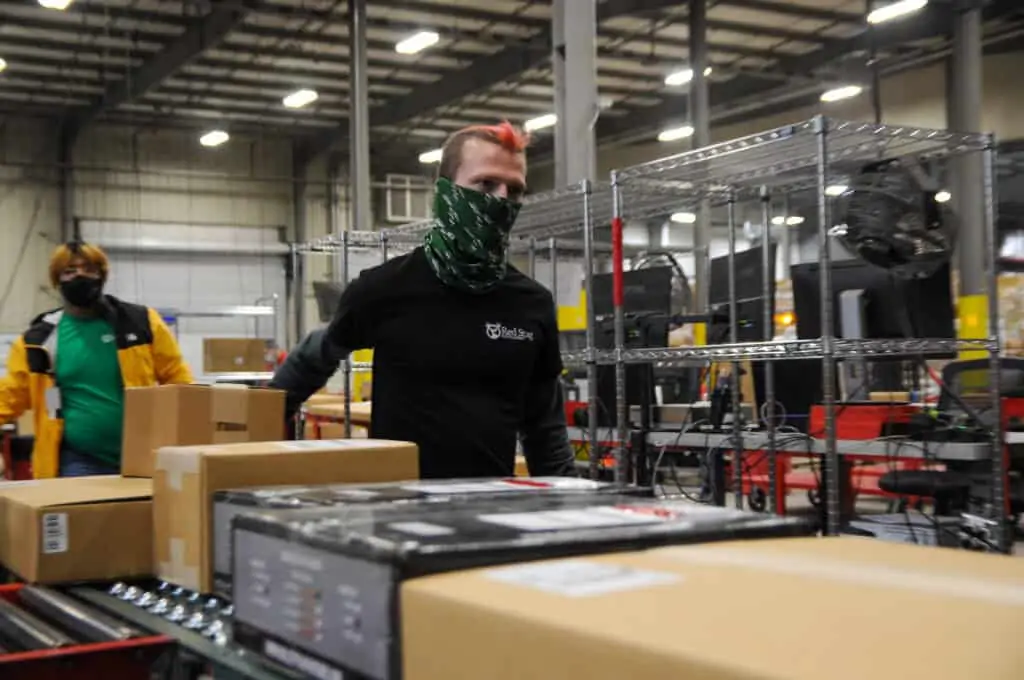An order fulfillment center plays a crucial role in modern e-commerce, ensuring that businesses can process, pack, and ship orders quickly. These specialized facilities streamline operations by handling everything from inventory management to last-mile delivery. Understanding how a fulfillment center accelerates order processing is essential for businesses aiming to improve efficiency, reduce errors, and enhance customer satisfaction.
What Is an Order Fulfillment Center?
An order fulfillment center is a third-party logistics (3PL) facility designed to store inventory, manage orders, and ship products on behalf of businesses. Instead of handling fulfillment in-house, companies outsource these tasks to fulfillment centers, which use advanced technology and logistics strategies to expedite the process.
These centers integrate directly with e-commerce platforms, ensuring real-time inventory tracking and seamless order processing. The moment a customer places an order, the fulfillment center picks, packs, and ships the item, often on the same day.
Optimized Inventory Storage for Faster Processing
A well-organized fulfilment center strategically places products in designated storage areas for quick retrieval. Unlike traditional warehouses, these facilities use smart shelving systems, automated storage solutions, and real-time inventory tracking to eliminate delays.
- Zone-based picking reduces travel time within the facility, ensuring items are retrieved efficiently.
- Automated storage and retrieval systems (AS/RS) help locate and transport items faster than manual processes.
- RFID and barcode scanning provide instant inventory updates, preventing errors and stockouts.
By minimizing the time spent locating items, fulfillment centers ensure that orders move through the processing pipeline quickly.
Streamlined Picking and Packing for Maximum Efficiency
One of the most time-consuming steps in order fulfillment is picking and packing. Fulfillment centers use advanced strategies to accelerate this process:
- Batch picking allows workers to collect multiple orders simultaneously, cutting down travel time within the facility.
- Automated sorting systems ensure that items are directed to the correct packaging stations without manual intervention.
- Pre-set packing stations with standardized materials eliminate unnecessary handling, reducing the time needed to pack each order.
These improvements result in faster processing, ensuring that customers receive their orders promptly.

Integration with E-Commerce Platforms for Instant Order Processing
A high-quality order fulfillment center integrates directly with e-commerce platforms and marketplaces. This connection allows for real-time updates and instant order transmission:
- Automated order syncing eliminates the need for manual entry, reducing delays and human errors.
- AI-driven demand forecasting ensures that popular products are readily available, preventing backorders.
- Custom API integrations streamline workflows, allowing seamless communication between sales channels and fulfillment systems.
By automating data transfer, fulfillment centers reduce lag time between order placement and shipment initiation.
Expedited Shipping and Last-Mile Delivery Optimization
Once an order is packed, fulfillment centers focus on the fastest shipping method to get it to the customer quickly. They achieve this through:
- Multi-carrier partnerships that enable businesses to choose the best shipping option based on cost and speed.
- Distributed fulfillment networks that position inventory across multiple centers, reducing shipping distances.
- Real-time tracking and route optimization that prevent delays and ensure on-time deliveries.
These logistics enhancements minimize transit time and improve the overall customer experience.
Returns Management for Faster Processing and Restocking
Handling returns efficiently is crucial for order fulfillment speed. A fulfillment center streamlines the return process by:
- Automating return authorizations so customers receive instant return labels.
- Inspecting and restocking returned items quickly to keep inventory updated.
- Integrating return data with inventory systems to prevent overselling.
Fast and efficient returns processing helps businesses maintain smooth operations without disruptions.
Real-Time Data Analytics for Continuous Improvement
Fulfillment centers use data analytics to refine and optimize their processes. By analyzing key metrics, they can identify inefficiencies and improve order processing speed:
- Order accuracy tracking reduces fulfillment errors and prevents costly reshipments.
- Processing time analysis identifies bottlenecks and improves operational efficiency.
- Predictive analytics optimize staffing and inventory levels based on demand trends.
These data-driven insights allow fulfillment centers to maintain peak performance and continuously improve their speed and accuracy.
What to Remember When Choosing a Fulfillment Center
To maximize efficiency, businesses should consider the following when selecting an order fulfillment center:
- Location matters: A strategically located fulfillment center can reduce shipping time and costs.
- Technology integration is key: Ensure the facility connects seamlessly with e-commerce platforms.
- Scalability is essential: Choose a provider that can accommodate growth without sacrificing speed.
- Reliability should be a priority: Partner with a fulfillment center known for accuracy and efficiency.
By selecting the right fulfillment partner, businesses can enhance their order processing capabilities and improve customer satisfaction.
An order fulfillment center transforms logistics by automating and optimizing each step of the fulfillment process. From inventory storage to last-mile delivery, these facilities ensure fast, accurate, and cost-effective order handling. Businesses that leverage fulfillment centers gain a competitive edge by delivering orders quickly and efficiently, keeping customers satisfied and operations running smoothly.





